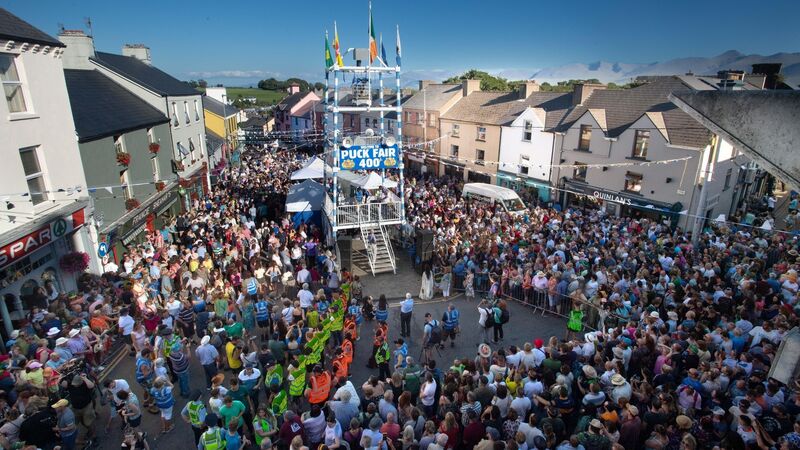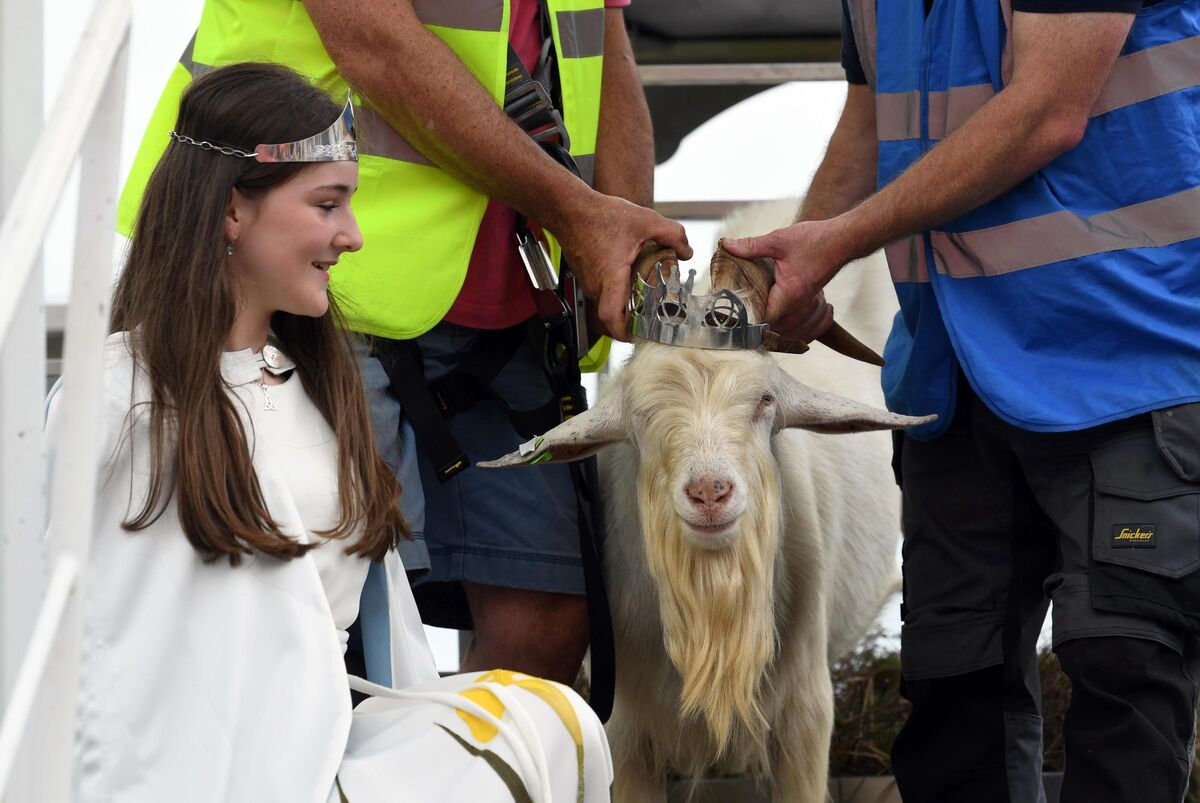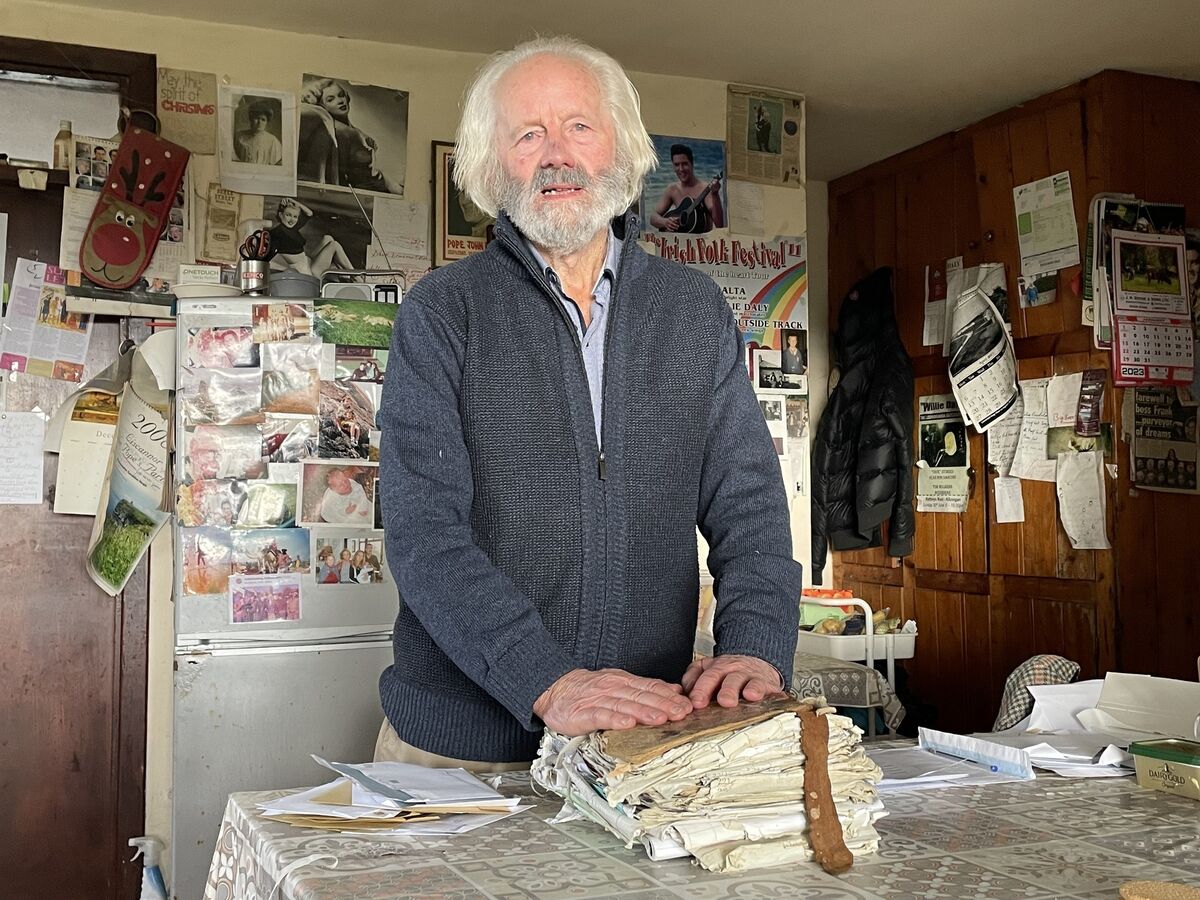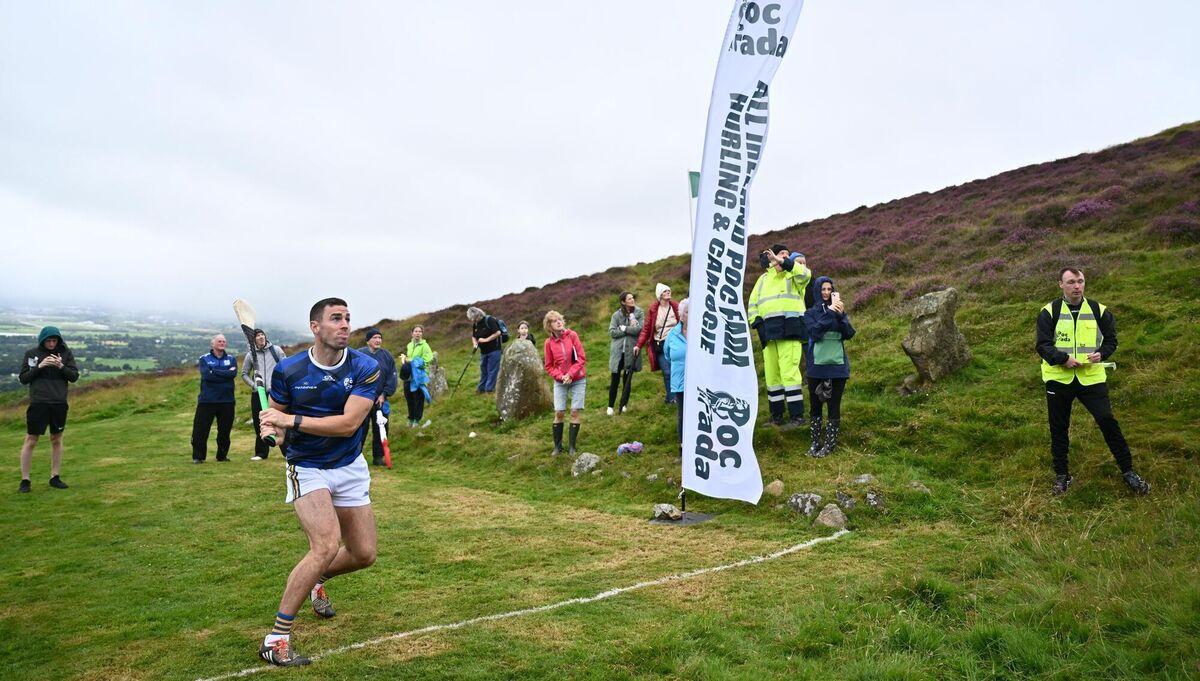All the fun of the fair — What is it about Ireland’s love affairs with festivals?

A wild mountain goat is crowned 'King Puck' by Alesha Williams, Queen of Puck Fair, at the annual crowning ceremony in the town square of Killorglin in 2022. A goat, standing beneath a statue of a goat in the middle of a town nationally synonymous with goats, being venerated — not as some sort of a God — but, just an actual goat, is as straightforward as the Puck Fair gets. Photo: Don MacMonagle
Try to describe the annual Puck Fair in Kilorglin to the uninitiated, and you should expect a few raised eyebrows.
Every year a group of locals head up into the MacGillycuddy's Reeks mountain range and catch a feral goat. The goat is brought back to the town and the "Queen of Puck", traditionally a young school girl from one of the local primary schools, crowns the goat "King Puck".
Once anointed, the festivities can start. King Puck, no doubt delighted with himself, chills in a small cage on a high stand for a period of time (more of that anon), and on the third day of the fair is brought down to be led back to the mountains. This happens on the 10th, 11th and 12th of August every year without fail. Despite the involuntary detention, organisers assure us all no goats are harmed during the capture, coronation and subsequent celebrations.
Those familiar with Shirley Jackson’s short story The Lottery (or, indeed, Christopher Lee’s 1973 folk horror classic The Wickerman) may fear something sinister afoot (ahoof, even), but the parading of King Puck is as flagrant as the exposure of the animal to the gaze of us humans gets. So, bemusement is likely the only thing he suffers. Which may be the exact same reaction you get from a stranger wandering into Kilorglin unawares this weekend.
A goat, standing beneath a statue of a goat in the middle of a town nationally synonymous with goats, being venerated — not as some sort of a God — but, just an actual goat, is as straightforward as the Puck Fair gets.
The fair itself is purported to be ancient but can only officially be traced back as far as 1613 when King James I issued a charter granting legal status to the existing fair in Killorglin. That’s a helluva run, especially when you juxtaposed the rather novel values of the Puck Fair against the corporatisation of pretty much every other form of entertainment.
How has such an event maintained relevancy, even grown in popularity? It’s expected over 100,000 people will descend on the town this weekend. In the context of almost what constitutes a family day out these days, both in terms of cost and content, it’s a testimony to the pulling power of tradition, and an unwillingness from those who invest so much time in organising and promoting the event to bend the knee to modern standards.
As we look at the Puck Fair and what it offers, it’s also worth considering other similar festivals around the country, and why they still appeal so strongly.
, Kilorglan, Co. Kerry, 10-12th August: The undisputed King of Quirk. There are many theories as to why the Goat became the, ahem, GOAT, but this version on the fair's own website appeals to me the most:
“Another theory centres around a widely mentioned story that associates King Puck to English Ironside Leader Oliver Cromwell. It is related that while the 'Roundheads' were pillaging the countryside around Shanara and Kilgobnet at the foot of the McGillycuddy Reeks, they routed a herd of goats grazing on the upland.
"The animals took flight before the raiders, and the he-goat or 'Puck' broke away on his own and lost contact with the herd. While the other goats headed for the mountains, 'Puck' went towards Cill Orglain (Killorglin) on the banks of the Laune.

"His arrival there in a state of semi-exhaustion alerted the inhabitants of the approaching danger and they immediately set about protecting themselves and their stock. It is said that in recognition of the service rendered by the goat, the people decided to institute a special festival in his honour and this festival has been held ever since.”
As someone who was raised watching Lassie alert farmers to little kids falling down wells, I’m all in on this account. What visitors should expect is lots of music, art, puppeteering, magic shows, petting zoos and a dethronement ceremony.
The is an epic, month-long festival that runs every September that does exactly what it suggests it does. Made even more famous by Christy Moore’s song of the same name, it continues to thrive in an age when digital dating is as ubiquitous as rain in Galway.
As Europe’s biggest singles festival, it claims to be over 165 years old. Willie Daly, the last known traditional matchmaker in Ireland, presides over the festival like the Pope does Sunday mass in the Vatican. Since he started out as a matchmaker 50 years ago, following in his father’s and grandfather’s footsteps, Willie has set up around 3,000 marriages.
On him at all times is his ‘Lucky Book’ — a precious notebook of love-seeking profiles which is about 150 years old.

He previously explained to this paper that, “If you touch this ‘love ledger’ you’ll be married and in love within six months. If you are already married, you will recreate the honeymoon period you first had”.
There aren’t many dating websites that give those guarantees.
In parallel to the pursuit of romance is a program of craic and ceoil that will appeal to singles and couples alike. The festival apparently attracts up to 60,000 visitors every single year. That’s a lot of Joop, a lot of Brylcream, and a lot of spanx.
While not at the same level as those mentioned above, the might well reach comparable international acclaim if it was willing to sell out a little, and market itself a little better.
The festival, which ran last weekend in the little Donegal village near the Derry border on the mouth of the River Foyle, has one thing going for it that money can’t buy: an unforgettable name. An event that could easily sell 10,000 tee-shirts was The Great Muff Bake-Off.
The town has already lent it’s name to a gin that counts Russell Crowe amongst it’s champions and investors. It is perhaps understandable that residents of Muff may well cringe at the sniggers a mention of their homeland evokes, a look the program for last week's activities perfectly encapsulates the spirit of the village festival in Ireland.
Music, food, dancing, arts and crafts — it has it all. It still jars that there’s a gift horse that’s been looked squarely in the mouth, however.
competition, Cooley mountains, Co Louth.
Not a festival per se, but an annual event so uniquely Irish and rooted in tradition it deserves mention here, especially as a piece of GAA history and tradition spiritually and culturally centred on the wild foothills of the Cooley mountains.

Like many parts of Irish sports history, Poc Fada has proud and heroic ancient origins. When Cú Chulainn set out to his uncle King Conor Mac Nessa's palace, he shortened the road for himself by hurling the ball ahead of him and thus set up the first cross-country long puck record.
Likewise, Fionn MacCool is said to have pucked a ball from Fair Head in Antrim to Mizen Head in Cork. While these stories thrive on the mystique of mythology, what is certain is the first official Poc Fada competition took place in 1960 in Co Louth.
Fr Pól MacSeain, curate of the Fatima Park suburb of Dundalk, "and his helpers" came up with the idea of the competition, which intended to commemorate the hurling exploits of Cú Chulainn.
Last Monday, Fionán Mackessy emerged victorious, as this year's edition was played in some of the worst weather in the competition’s history, with driving wind and incessant rain. The Kerry hurler completed the course in 40 pucks and 73.4 metres, but due to the inclement weather one section of the track had to be closed for safety reasons, reducing the length to three quarters of the normal distance.
, Tralee, Co Kerry.
Growing up in West Mayo, there was an annual beauty queen festival called The Rose of Carrindine. Nobody took it very seriously, and it’s primary reason for being seemed to be a distraction from everyday life, and a chance for locals to congregate, relax and enjoy themselves.
The Rose of Tralee festival seems to serve the exact same purpose, despite being maligned for its potential “soft” misogyny, as celebrated for its traditional values. In previous years, the festival has drawn over 200,000 visitors to the town, its international appeal making it a fan favourite, especially for North American guests.
Given that they draw almost half as many for crowning a goat as saviour a few towns over, perhaps we should all take a breath and enjoy the novelty of a festival that celebrates people's virtues. Silly it may be, but you’d have to wonder, where’s the harm?













